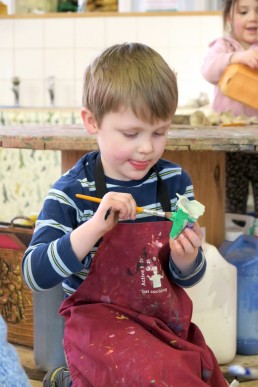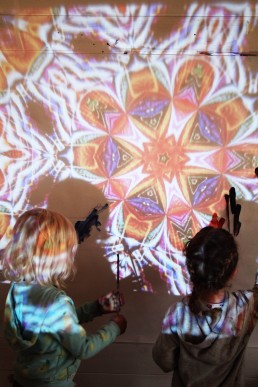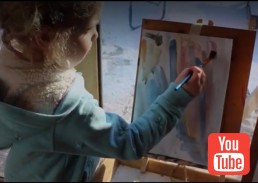The Role of an Atelierista
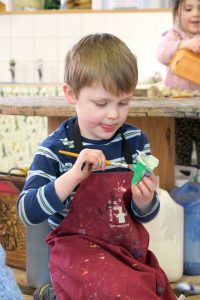 The Role of an Atelierista
The Role of an Atelierista
The atelier and atelierista are integral parts of the Reggio Emilia approach. The atelierista, a teacher with a background in the arts, works together with children in the atelier (studio). Together they will often embark on long-term projects and experiment with a variety of creative mediums. The atelier is a learning space and shared environment where children can express themselves through ‘the hundred languages’. This may be through singing, drawing, dancing, clay or natural materials. ‘The hundred languages’ represents the infinite potential where children can express their learnings, feelings and ways in which they comprehend the world.
As an atelierista, I have witnessed how effective the Reggio-inspired approach is in contrast to traditional education. Children have an innate sense of curiosity and awe and when presented with a range of resources and materials, they expand their inquisitive minds. Interestingly, artists are often trying to channel this child-like wonder, exploring with a sense of openness without the restriction of doubts and fears. Therefore, I believe in utilising this inner curiosity and creating a space where life-long learners and artists can emerge.
 Rather than conforming to the role of a teacher in a traditional sense, as an atelierista I learn alongside the children whilst encouraging problem solving, expression and communication. Together we are on an exciting adventure and learning process that unfolds before our eyes. In their own time, the children begin to master techniques and familiarise themselves with different mediums. This also provides me the opportunity to understand the different ways children learn, to observe each child as a unique individual.
Rather than conforming to the role of a teacher in a traditional sense, as an atelierista I learn alongside the children whilst encouraging problem solving, expression and communication. Together we are on an exciting adventure and learning process that unfolds before our eyes. In their own time, the children begin to master techniques and familiarise themselves with different mediums. This also provides me the opportunity to understand the different ways children learn, to observe each child as a unique individual.
Observing, listening, documenting and reflecting are essential to the role of an atelierista. Significantly, being alert and aware is crucial to witness the children’s discoveries, to hear meaningful conversations or to ask thought provoking questions. Only after this process can quotes, observations and notes be written. This documentation allows for deep reflection for both the atelierista and the children, in which interests, learning and progress can be shared. For me, it also reveals subtle patterns about the children’s behaviour and can indicate which direction we might take next. Documentation also enables me to truly listen to the voice of the child and respect their learning journey.
During my time as an atelierista, I am constantly surprised and delighted with what children discover. Each day is a new opportunity for exploration and insights, often stepping back and allowing for that magic to happen takes learning to a new level. This process, rather than the final product, is ultimately the most important part of a child’s journey. I think even as adults, we would benefit from engaging in the world with curiosity and to trust the process.
Julie Lai
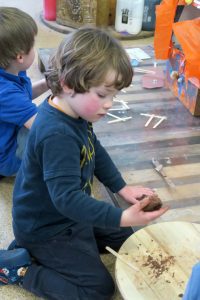
Exploring Pattern in the Art Studio
This week in the Art Studio has had a child led focus on pattern, but how did we get there? Last month we found a butterfly on the decking that was no longer alive. The children shared ideas on what might have 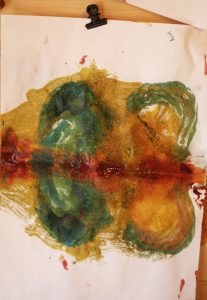 happened? 'It got stung by a wasp!' 'It was eaten by a fox!'
happened? 'It got stung by a wasp!' 'It was eaten by a fox!'
Whilst they came to their own conclusions we brought the butterfly into the Art Studio for a close examination. Out came all the research books as we identified it as a 'Speckled Wood'. The butterfly inspired some drawings, which lead onto paintings with particular focus on the wing patterns and colours.
This naturally lead onto art work and printing techniques by folding the paper to make prints of butterfly wings as we learnt a new word 'Symmetrical'. Their symmetrical patterns progressed and this interest strayed away from the butterfly and lead onto pattern within art using various techniques.
This week we took our pattern painting onto a large scale with the added media of light and shadow as a kaleidoscope was projected onto the wall. We also used clay to create pattern by imprinting beads and various other loose parts.
The Art Studio as well as being a Reggio Inspired place to explore project based learning is also a space for our children to explore new surroundings and new friendships in smaller groups. For some it is their space to build with the magnets, notice new books, experiment with different art materials and explore shadows on the projector. It is a space that can be quiet, a space that can be loud, where we play instruments and sing with the ukulele, and a space with provocations, a space that is rearranged whenever new interests emerge. With between 6 and 8 children in each session it can be the perfect opportunity to hear the children's voices which guides our planning.
Here's some of this weeks photos from the Art Studio.
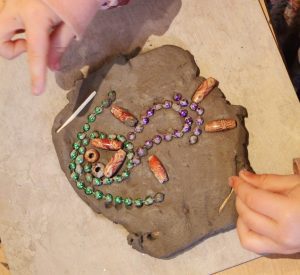

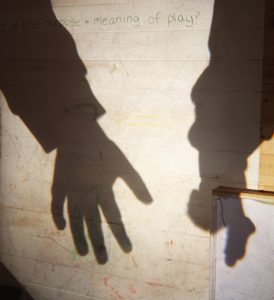
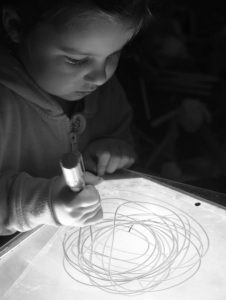
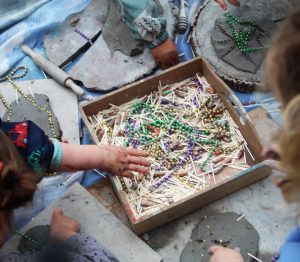
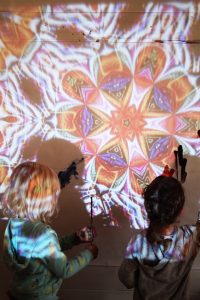

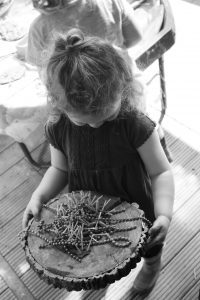
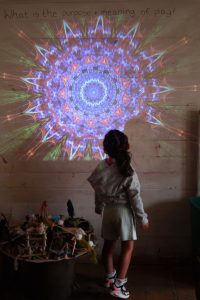
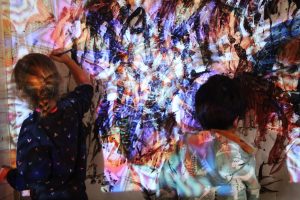
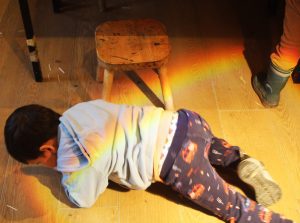
Seekers of Meaning
New Video
Over the last few weeks I have been filming the children as they explore the Art Studio. To read more about our Art studio you can go back to last weeks blog.
The children's current shared interest is construction and building houses from clay, bricks, sticks and blocks. Some of that is captured in our brand new video that you can watch here-
https://www.yout ube.com/watch?v=4-59qb9GgdQ
ube.com/watch?v=4-59qb9GgdQ
